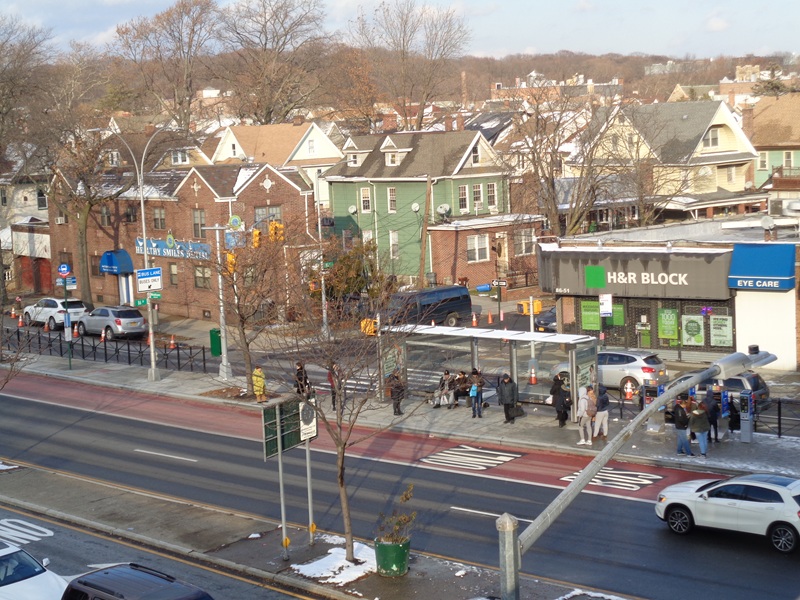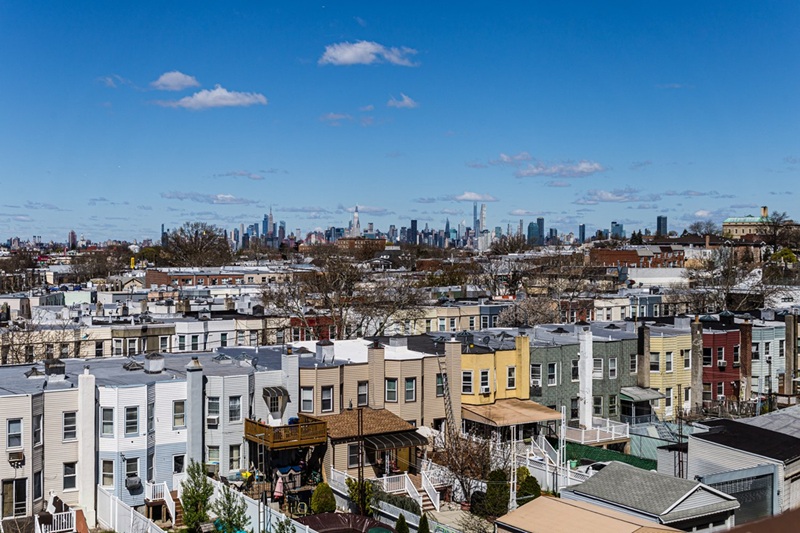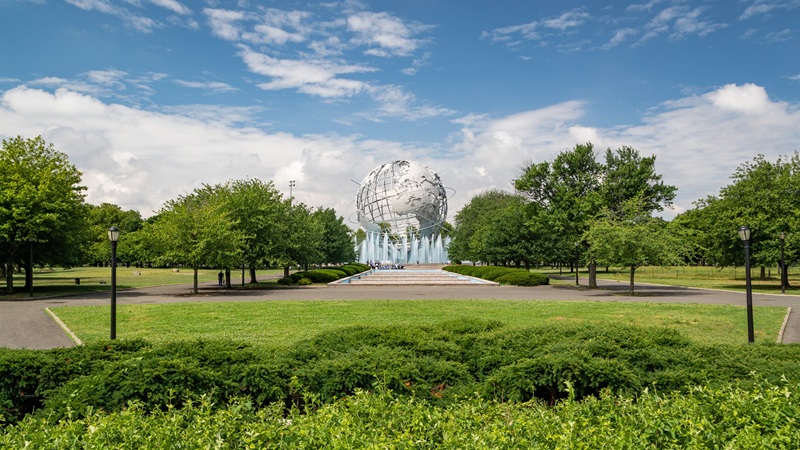
Nestled in the heart of Queens, Woodhaven is a neighborhood that offers a mix of suburban tranquility and urban convenience. Known for its rich history, strong community, and relatively affordable housing options, Woodhaven is one of the borough’s hidden gems. Over the years, the neighborhood has undergone gradual changes and development while retaining its old-school charm. With its close-knit community, tree-lined streets, and easy access to public transportation, Woodhaven is an attractive place to live, work, and raise a family.
This article will explore the history, culture, real estate market, amenities, and future prospects of Woodhaven, providing insight into why this neighborhood is a great place to call home in Queehttps://bt-newyork.com/queens-the-cultural-mosaic-of-new-york-city/ns.
Overview of Woodhaven
Woodhaven is a primarily residential neighborhood located in the southwestern part of Queens, New York City. It is bordered by Richmond Hill to the north, Ozone Park to the south, Forest Hills to the west, and South Ozone Park to the east. Despite its central location within Queens, Woodhaven retains a suburban feel, with tree-lined streets, single-family homes, and quiet parks, making it a popular choice for families and working professionals.
The neighborhood’s name, “Woodhaven,” reflects its rural beginnings. Historically, it was known for its dense forests, which made it a popular spot for leisure and hunting in the 19th century. Over time, as the city expanded, Woodhaven evolved into a thriving residential area while preserving some of its original charm and character.
Historical Background
Woodhaven’s history dates back to the 17th century, when it was first settled by the Dutch. Initially, the area was part of the vast land holdings of the Dutch West India Company. By the 1800s, the area had become a rural retreat for wealthy New Yorkers looking to escape the hustle and bustle of downtown Manhattan. The neighborhood was originally known as Woodtown or Woodhaven because of the dense woodlands and tree cover that defined the area.
In the late 19th century, with the extension of the Long Island Rail Road (LIRR) to the area, Woodhaven began to experience rapid development. The area transformed from a rural settlement into a thriving suburban neighborhood. In 1914, the Queensboro Bridge was completed, providing a direct connection to Manhattan and making Woodhaven more accessible. This growth was further bolstered by the construction of the subway system, which improved public transportation in the area and made it even more attractive for commuters.
Residential Character and Housing Market
One of the defining features of Woodhaven is its residential character. The neighborhood offers a range of housing options, from single-family homes and townhouses to smaller apartment buildings. The housing market is considered to be more affordable compared to other neighborhoods in Queens, particularly when compared to nearby Forest Hills or Astoria.
The architecture of Woodhaven reflects the neighborhood’s historical roots, with many homes dating back to the early 20th century. The neighborhood is primarily made up of two-family homes, detached houses, and semi-detached homes, which appeal to families and those seeking more space than typical city apartments can offer. Many of these homes feature traditional brick facades, front and backyards, and private garages, which makes them ideal for residents seeking suburban-like living in the city.
Real estate prices in Woodhaven tend to be lower than in many other parts of Queens, making it an attractive option for first-time homebuyers, young families, and those looking for more affordable housing options in New York City. While prices have been rising in recent years, the cost of living in Woodhaven is still relatively affordable compared to nearby neighborhoods such as Forest Hills or Jackson Heights.
For renters, Woodhaven offers a variety of rental units, including apartments, co-ops, and duplexes. These rental options are often more affordable than those found in more expensive Queens neighborhoods, and many apartments come with easy access to public transportation and local amenities.
Transportation and Accessibility
One of the major appeals of Woodhaven is its excellent transportation options. The neighborhood is well-served by both subway and bus lines, making commuting to Manhattan and other parts of Queens convenient and efficient.
The A train, which runs through Woodhaven, offers a direct connection to Manhattan and connects residents to key neighborhoods like Jamaica, Rockaway, and Brooklyn. The J train also passes through Woodhaven, providing additional access to areas like Brooklyn and the Lower East Side of Manhattan.
Additionally, Woodhaven is well-served by several bus lines, including the Q11, Q21, and Q52, which connect residents to surrounding areas, including Queens Boulevard, Forest Hills, and Jamaica. These bus lines make it easy for residents to access other parts of Queens and the wider city.
The neighborhood is also close to major highways like the Van Wyck Expressway and the Belt Parkway, making it convenient for drivers to access other parts of Queens, Brooklyn, and Long Island.
Community and Local Amenities
Woodhaven has a close-knit, family-oriented community. Residents take pride in their neighborhood, with local organizations and community groups playing an important role in maintaining the area’s character. There are also several community events throughout the year, such as street fairs, cultural festivals, and seasonal celebrations, that help foster a strong sense of belonging.
In terms of amenities, Woodhaven offers a variety of options for both residents and visitors. The neighborhood is home to several parks and green spaces, which provide opportunities for outdoor recreation. Forest Park, one of the largest parks in Queens, is located just a short distance away from Woodhaven and offers walking trails, sports fields, picnic areas, and playgrounds. It is a popular destination for joggers, cyclists, and families looking to spend time outdoors.
Woodhaven also has a selection of local restaurants, cafes, and shops, many of which reflect the diverse cultural backgrounds of the area’s residents. There are a number of ethnic restaurants, family-owned diners, and small independent shops that give the neighborhood its unique charm. Additionally, the nearby Queens Center Mall and Jamaica Avenue provide access to larger retail stores, shopping centers, and supermarkets.
Cultural Diversity
Woodhaven is home to a culturally diverse population. Over the years, the neighborhood has seen an influx of immigrants from a variety of countries, including Latin America, Caribbean nations, Asia, and Europe. This cultural diversity is reflected in the local businesses, restaurants, and community organizations, creating a vibrant and inclusive atmosphere.
The neighborhood has a rich history of Irish, Italian, and Puerto Rican communities, and these cultural influences can still be seen in the area’s events, such as St. Patrick’s Day parades, local festivals, and annual celebrations.
Future Development and Growth
Woodhaven is expected to continue growing and evolving in the coming years. With increasing interest from young families and first-time homebuyers, as well as the expansion of public transit options, the neighborhood is poised to see further development and improvements in infrastructure. There are ongoing efforts to beautify the area, with new landscaping projects, street improvements, and the development of mixed-use spaces that combine residential, retail, and cultural venues.
However, like many neighborhoods in New York City, Woodhaven may face challenges associated with gentrification and rising property values. Balancing growth and development while maintaining the neighborhood’s diverse and affordable character will be crucial as the area continues to evolve.
Conclusion
Woodhaven, Queens, offers a unique blend of suburban comfort and urban convenience. With its rich history, affordable housing options, diverse community, and easy access to public transportation, it remains one of Queens’ most desirable neighborhoods. Whether you’re looking for a quiet place to raise a family, a vibrant community to call home, or simply a neighborhood with a sense of local pride, Woodhaven has something to offer for everyone.
As the neighborhood continues to grow and develop, it is likely to maintain its reputation as a peaceful, family-friendly area with strong community bonds while benefiting from the revitalization efforts that are shaping many parts of Queens. Woodhaven stands as a perfect example of how a neighborhood can evolve while still holding on to the qualities that make it special.

